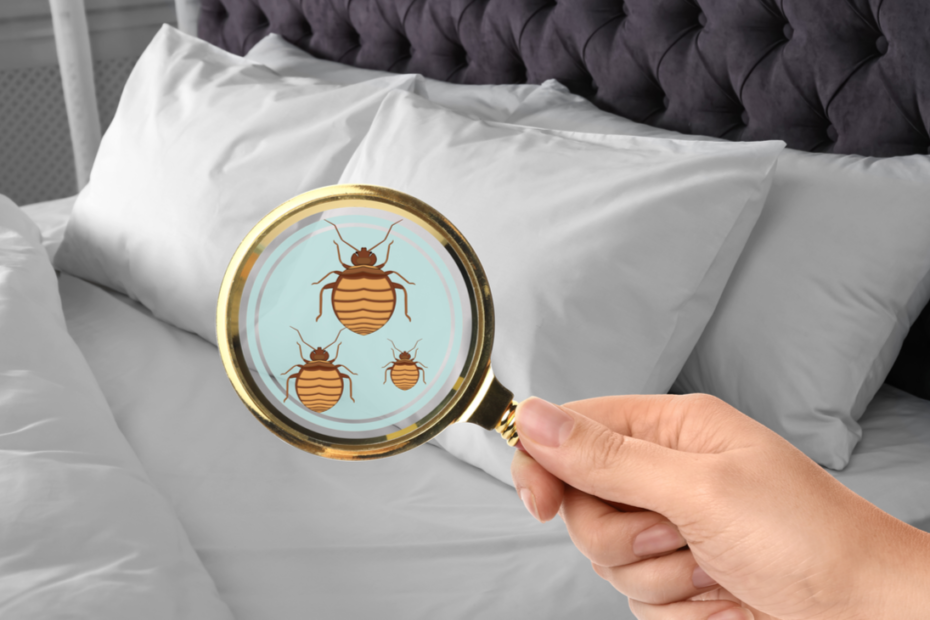Have you ever woken up to find a small black bug on your pillow? If so, you might have wondered about its origin, species, and if it indicates a larger issue at home.
In this blog post, we’ll uncover the mystery of the small black bug on your pillow and answer all your questions.
What Do Bed Bugs Look Like?
Tiny, oval-shaped insects that feed on the blood of animals and humans – that’s bed bugs for you. These pests are masters of stealth, hitchhiking on personal belongings to invade homes unnoticed. To prevent bed bug infestations, knowing what signs to watch out for is crucial.
Physical Description
Bed bugs have a reddish-brown hue and feature a flat, oval-shaped body akin to that of an apple seed. With six legs and antennae extending from their heads, they are unmistakable. Ranging from 1 to 7 mm, their small size makes them hard to detect. Moreover, bed bugs are predominantly active at night, making daytime sightings uncommon.
Eggs and Nymphs
Bed bug eggs are extremely small, measuring approximately 1mm. They have a whitish hue and are comparable in size to a pinhead. Female bed bugs can lay hundreds of eggs in their lifetime. The eggs hatch into nymphs, which look like smaller versions of adult bed bugs. Nymphs grow to adulthood by feeding on blood, just like adults.
Behavior
Bed bugs are insects without wings, so they cannot fly. Instead, they move rapidly by crawling on various surfaces like bedding, furniture, and clothing. They are drawn to warm-blooded hosts like humans and can detect their presence by sensing the carbon dioxide they exhale. Bed bugs primarily feed at night and can survive for several months without a meal.
Must Read About: Commercial Pest Control for Hotels
Signs of Infestation
Easily detect bed bugs through signs and symptoms: waking up with itchy red bumps or welts on your skin could indicate bed bug bites. Look out for tiny reddish-black spots on sheets, pillows, and mattress—bed bug droppings or blood from crushed bugs. Other signs include a musty odor, shed skins, and live bed bugs.
Prevention and Control
Preventing bed bugs is easier than getting rid of them. When traveling, inspect hotel bedding and furniture for signs before settling in. At home, use mattress and pillow covers to prevent hiding and breeding. If you suspect bed bugs, contact a pest control professional for identification and treatment.
Spot Bed Bugs: Recognizing the Telltale Signs and Taking Action
Tiny, flat, reddish-brown bed bugs feed on human blood. With a small head, antennae, segmented body, and six legs, they have a distinctive appearance. Identifying their physical traits is crucial for detecting them early and treating them effectively. If you suspect a bed bug infestation, it’s vital to promptly contact a professional exterminator.Unitech Pest provides customizable extermination services. We use effective methods to quickly and safely eliminate bed bugs. Contact us today for a free inspection and consultation! Sleep soundly without bed bugs feeding on you – let us handle the problem.


